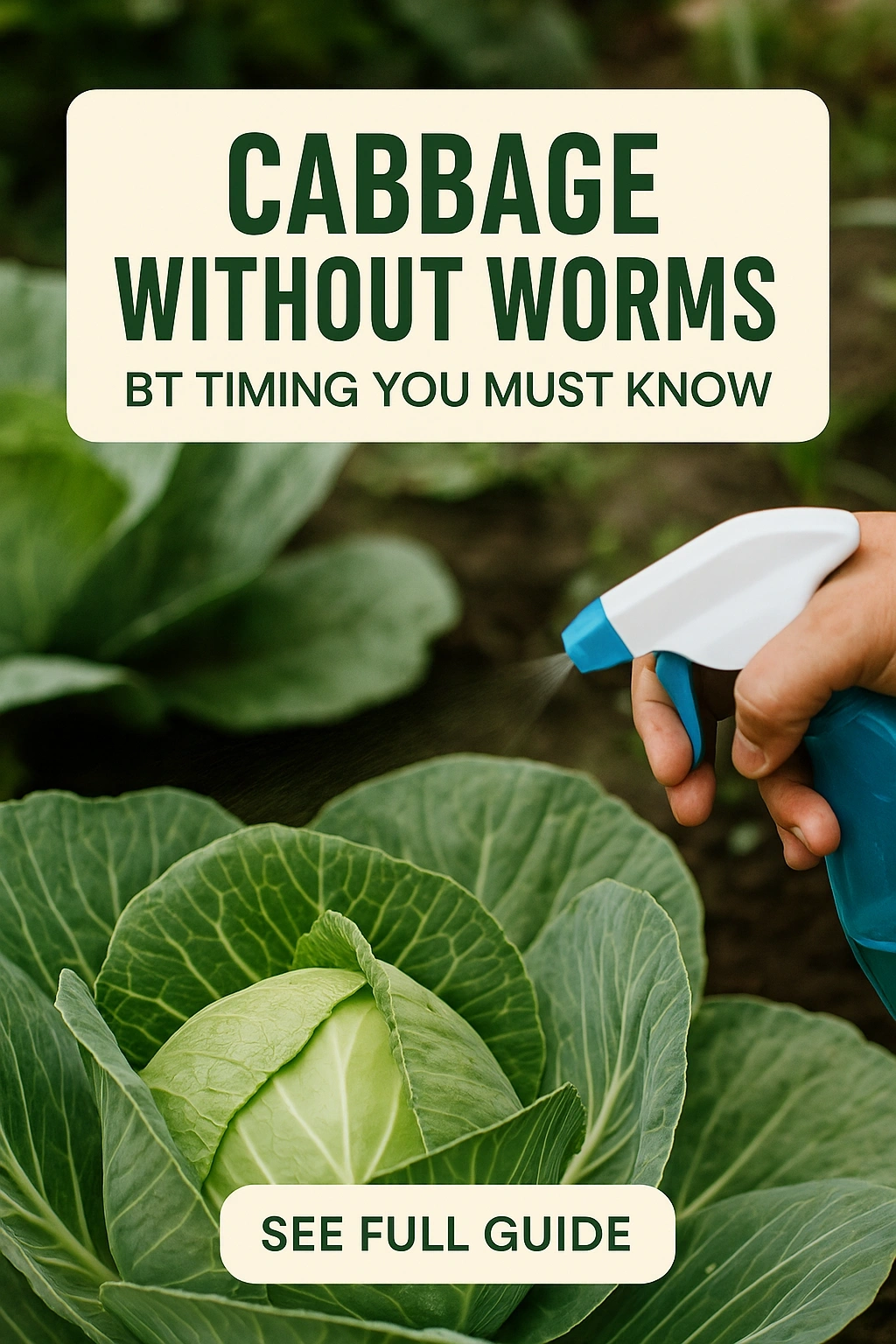
Discover the secrets to growing healthy cabbage free from pesky worms. Timing is crucial when using Bacillus thuringiensis (BT), a natural bacterium that acts as an effective pest control solution. This article will guide you through the best practices for applying BT, the lifecycle of cabbage pests, and how to ensure your cabbage thrives without the threat of worms.
Understanding Cabbage Pests
Cabbage is a popular vegetable, but it often faces threats from various pests, particularly caterpillars and worms. Common culprits include the cabbage looper, diamondback moth larvae, and imported cabbageworm. These pests can cause significant damage if left unchecked, leading to unsightly holes in the leaves and reduced yields. Understanding the lifecycle of these pests is critical for effective management.
Lifecycle of Cabbage Worms
The lifecycle of cabbage worms consists of four stages: egg, larva (caterpillar), pupa, and adult. Typically, adult moths lay eggs on the underside of cabbage leaves. Once the eggs hatch, the larvae begin to feed on the foliage. This is the most damaging stage, as they can quickly devastate a crop. The timing of BT application should coincide with the larval stage for maximum effectiveness.
The Role of Bacillus Thuringiensis (BT)
Bacillus thuringiensis is a naturally occurring bacterium that is widely used in organic gardening. When ingested by caterpillars, BT produces toxins that are lethal to them, but harmless to other beneficial insects, birds, and humans. Using BT allows gardeners to control cabbage pests without resorting to synthetic pesticides, promoting a healthier ecosystem.
Types of BT Products
There are several formulations of BT available, each targeting different types of pests. The most common formulations for cabbage pests include:
- BT kurstaki: Effective against caterpillars, particularly the cabbage looper and diamondback moth.
- BT israelensis: Primarily targets mosquito larvae and is not effective for cabbage worms.
- BT tenebrionis: Targets beetles and may not be suitable for cabbage but is useful for other crops.
For cabbage, BT kurstaki is the most recommended option, as it specifically targets the caterpillar pests that threaten cabbage crops.
Timing Your BT Applications
The timing of BT applications is critical to its effectiveness. To achieve optimal results, you must apply BT when the cabbage worms are in their larval stage. This stage typically occurs shortly after the eggs hatch, which can vary based on environmental conditions and the specific pest species.
How to Determine the Right Time for BT Application
To determine the best time to apply BT, monitor your cabbage plants regularly. Look for the following signs:
- Small, green caterpillars on the leaves.
- Eggs laid on the undersides of leaves, which appear as small clusters.
- Visible damage such as holes in the leaves.
Once you identify these signs, it’s time to apply BT for effective pest control.
Best Practices for Applying BT
For BT to be effective, it is essential to follow best practices during application. Here are some key considerations:
Application Techniques
1. **Spray Method:** Use a sprayer to apply BT directly onto the leaves of the cabbage plants. Ensure thorough coverage, especially on the undersides of the leaves where eggs may be located.
2. **Timing:** Apply BT in the early morning or late evening when temperatures are cooler. This helps prevent the bacterial spores from degrading quickly under the sun.
3. **Repeat Applications:** Monitor your plants and reapply BT every 7 to 10 days, or after heavy rain, to maintain effective pest control.
Environmental Considerations
While BT is a safe option for pest control, it is essential to consider the environment in which you are applying it. Avoid using BT during windy days, as this can lead to drift and affect non-target plants. Additionally, do not spray during peak pollinator activity, as this can impact beneficial insects.
Combining BT with Other Pest Management Strategies
Integrating BT applications with other pest management practices can enhance the effectiveness of your overall strategy. Consider the following:
- Cultural Practices: Practice crop rotation, use resistant cabbage varieties, and maintain good soil health to reduce pest pressure.
- Physical Barriers: Use row covers to prevent adult moths from laying eggs on your cabbage plants.
- Monitoring: Regularly check for pest activity and adjust your management strategies accordingly.
FAQs
How often should I apply BT to my cabbage plants?
It is recommended to apply BT every 7 to 10 days, especially after rainfall, to ensure continued protection against cabbage worms.
Is BT harmful to beneficial insects?
No, BT is generally safe for beneficial insects, birds, and mammals when used as directed. It specifically targets caterpillars and does not affect other insects.
Can I use BT in conjunction with other pesticides?
Yes, but it is essential to read the labels of both products to ensure compatibility. Always apply BT first, as it is more effective when caterpillars are actively feeding.
When is the best time to apply BT?
The best time to apply BT is during the early morning or late evening when temperatures are cooler and beneficial insects are less active.
How can I tell if BT is working?
Monitor your cabbage plants for a reduction in visible caterpillar activity and damage. If you notice fewer caterpillars and less leaf damage, BT is likely working effectively.
By understanding the timing and application of BT, you can cultivate a healthy cabbage crop free from worms and pests. Following these guidelines will help you achieve a thriving garden while maintaining an eco-friendly approach to pest management.
